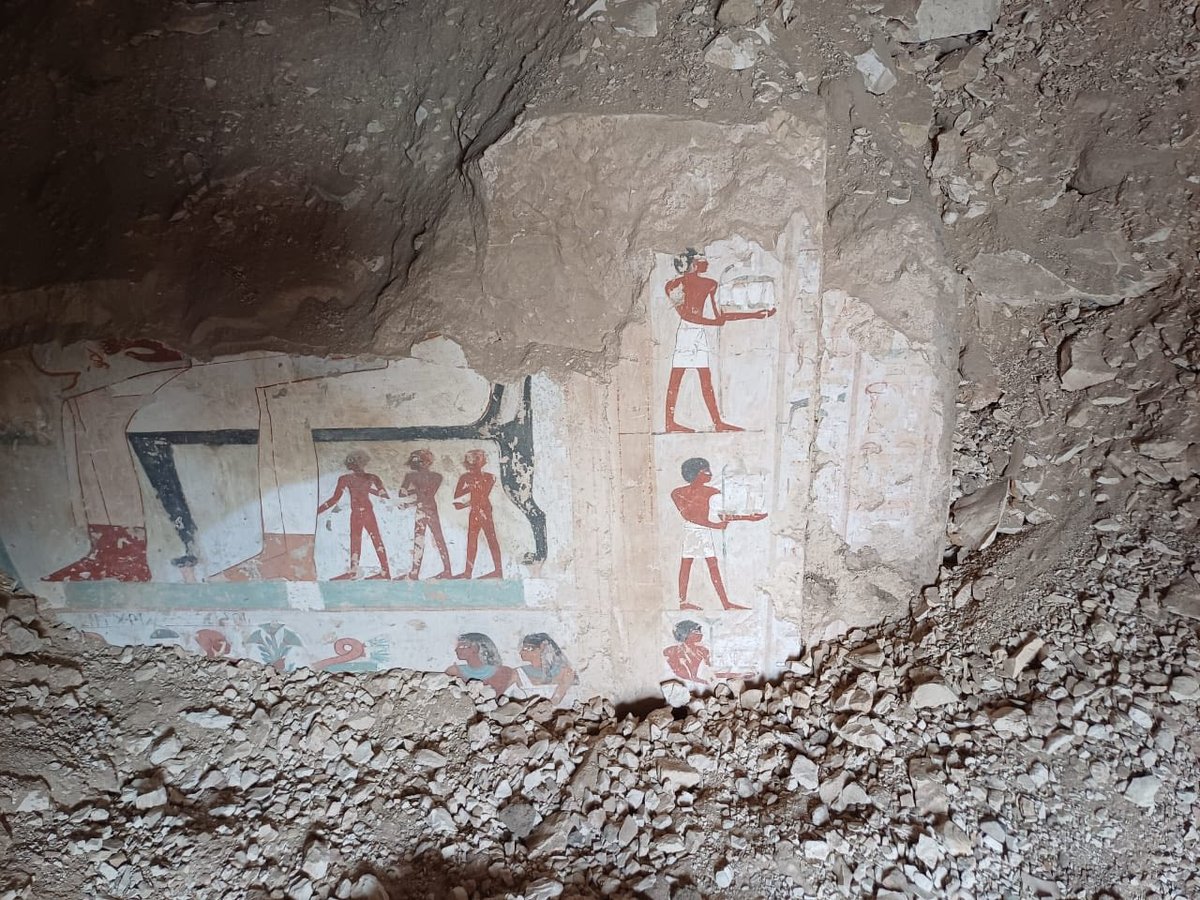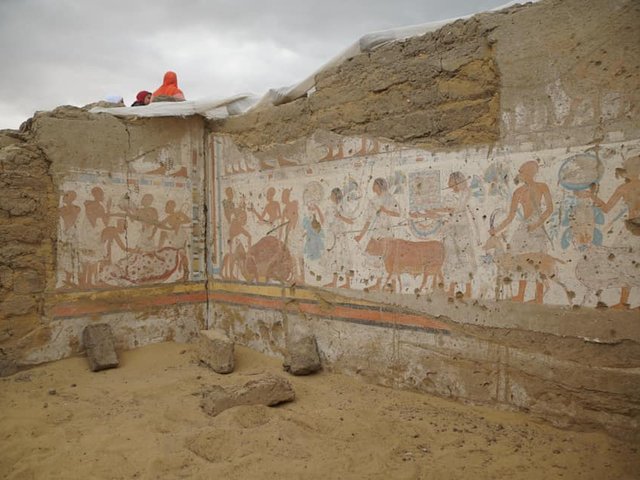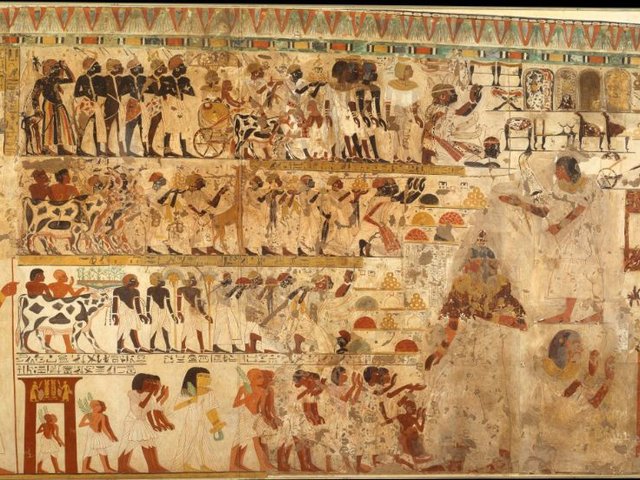Three tombs dating from more than 3,000 years ago have been discovered near the city of Luxor, close to the famed Valley of the Kings, Egypt’s Ministry of Tourism and Antiquities announced earlier this week. The tombs, which date back to the New Kingdom (around 1550-1070 BC), are believed to have belonged to three officials and were found by an all-Egyptian mission.
Mohamed Ismail Khaled, the secretary-general of the Supreme Council of Antiquities explained via a statement that investigations and cleaning work are still underway. However, the names and titles of the tombs’ owners have been identified through analysis of inscriptions. Painted scenes and several objects have also been found within the long-buried structures.
One of the tombs is indicated to have belonged to a person called Amun-em-Ipet, who worked in the temple or estate of Amun, a major deity who was revered as the king of the gods. According to the supreme council's statement, the scenes in the tomb—which dates from the Ramesside period (around 1295-1069 BC)—have mostly been destroyed. However, depictions of furniture carriers and a banquet are among those still visible.
Helen Strudwick, the senior curator of the Ancient Nile Valley at the Fitzwilliam Museum in Cambridge, tells The Art Newspaper that banquet scenes were often associated with the Beautiful Festival of the Valley. During this festival, a procession carrying statues of Amun, his wife Mut and son Khonsu would travel from the temple at Karnak on the Nile’s East Bank to sites on the West Bank, where celebrants would present offerings and enjoy elaborate feasts. “Everybody including the dead wanted to take part and the dead did so by being depicted in their tombs at a banquet,” Strudwick says.
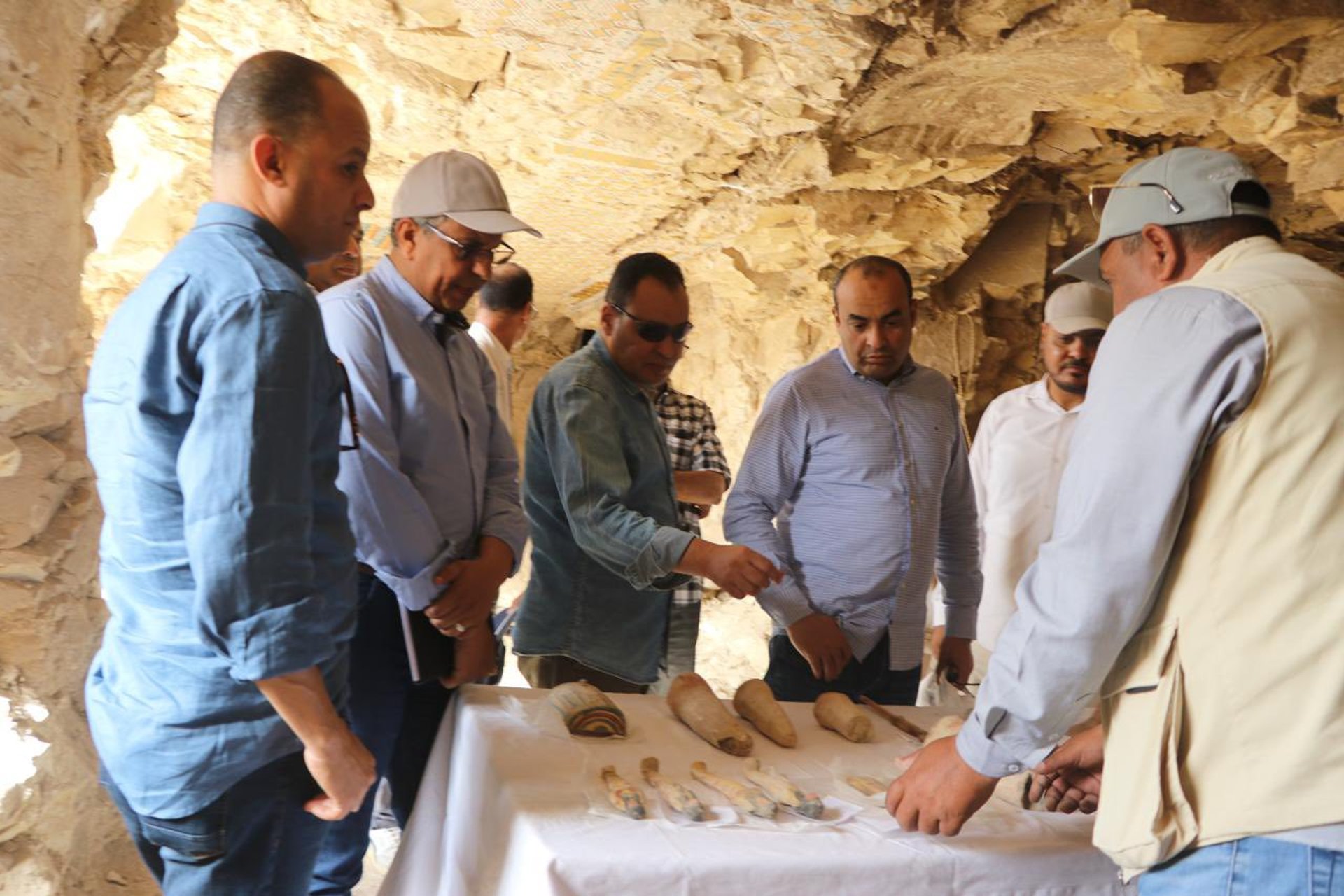
Members of the mission assessing finds in one of the tombs
Courtesy of the Egypt Ministry of Tourism and Antiquities
The other two tombs derive from the 18th Dynasty, which spanned from around 1550 to 1292 BC. One was built for someone called Baki, a supervisor of a grain silo. Another belonged to someone named “S”, who was a supervisor of a temple of Amun and the mayor of a region called the Northern Oases. He was also a scribe—an important position in Ancient Egyptian society.
The tourism and antiquities board released photographs of several objects discovered within the tombs. These include statuettes that Strudwick identifies as shabti, figures who would help the deceased with agricultural work in the afterlife. “There's a special spell, spell number six in the Book of the Dead, which enables the shabti to come to life and to respond,” adds Strudwick, who is curating an exhibition on the craftspeople Ancient Egypt, opening at the Fitzwilliam on 3 October.

The figurines found in one of the tombs, which Helen Strudwick identifies as shabti
Courtesy of the Egypt Ministry of Tourism and Antiquities
Abdel Ghaffar Wagdy, the director general of Luxor Antiquities and the head of the mission, says that Amun Em Ipet’s tomb is comprised of a small courtyard, an entrance, and a square-shaped hall ending with a broken niche. Meanwhile Baki’s tomb features a long corridor-like courtyard, followed by a second courtyard and the tomb’s main entrance. Inside, a transverse hall leads to another long hall, which ends with an incomplete chamber containing a burial well.
S's tomb also contains a small courtyard with a well. Beyond that is the tomb's main entrance and a transverse hall leading to an incomplete long hall.
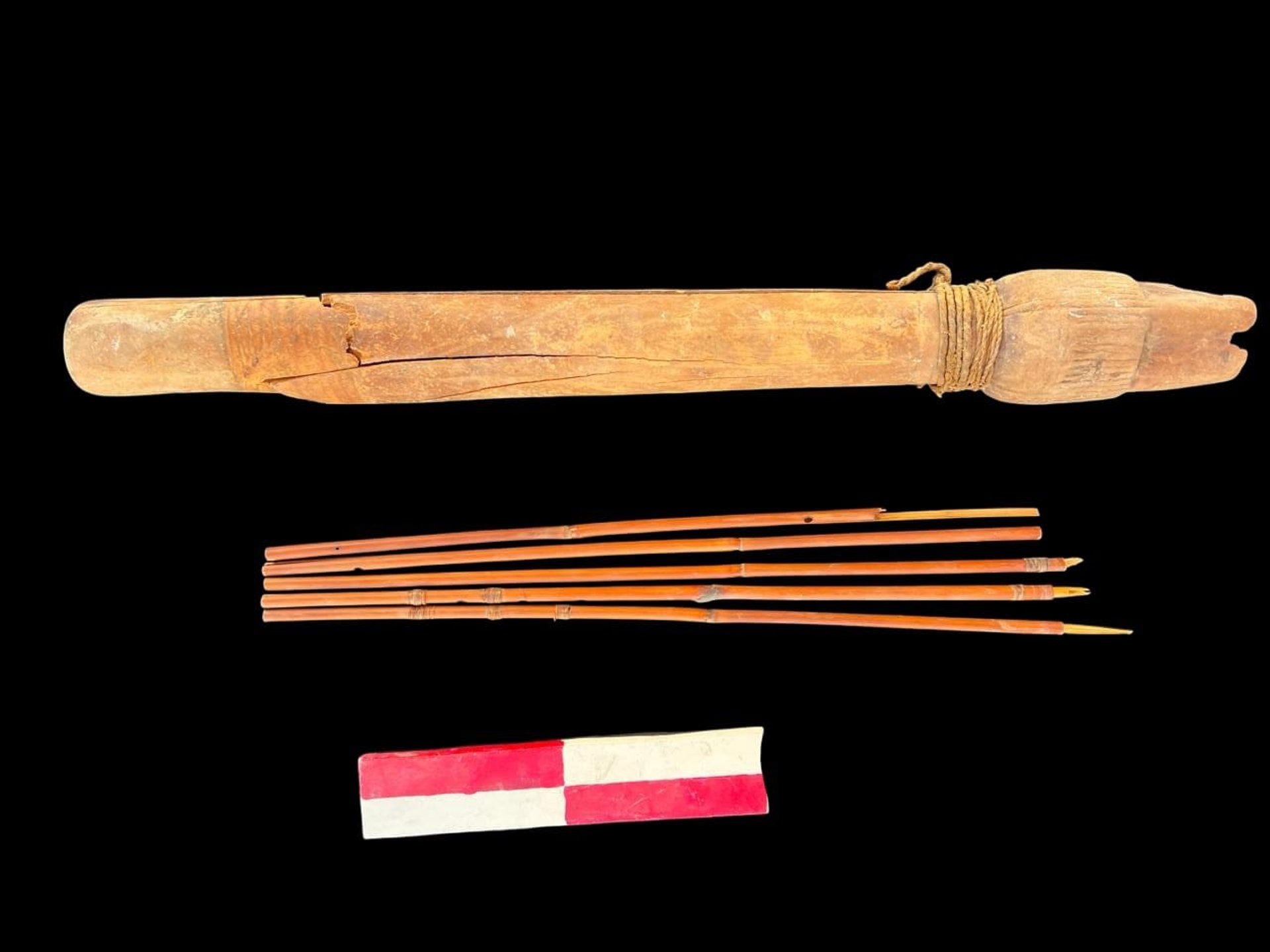
Other objects discovered in the tombs
Courtesy of the Egypt Ministry of Tourism and Antiquities
There have been a number of major discoveries in the Luxor region in recent years. In 2021, a mud-brick complex known as the area’s “lost golden city” was unearthed—filled with tools, urns and other items relating to daily life. It was described by Egyptologists at the time as the most significant discovery since King Tutenkhamun’s tomb was found in 1922. In February, archaeologists unearthed the final undiscovered pharaoh’s tomb of King Tutankhamun’s dynasty—with another finding believed to be related making headlines just days later.
The discovery of the three tombs in Draa Abul Naga will bolster cultural tourism in Egypt, Sherif Fathy, the country’s minister of tourism and antiquities said in the statement. It comes just over a month before the long-awaited Grand Egyptian Museum in Giza, housing more than 100,000 artefacts, is due to host its official grand opening.


